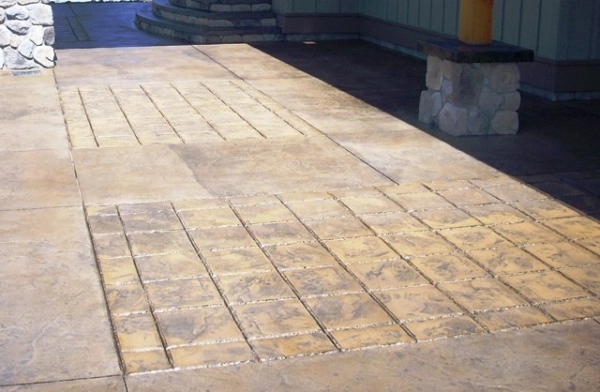The edging is one of the most essential components of a beautiful garden, concrete garden edging is one of the best choices. It aids in space delineation, provides a border for plants and flowers, and prevents soil erosion. There are numerous options for garden edging, including bricks and stones, but concrete is a popular and cost-effective option. In this article, we’ll discuss the advantages of concrete garden edging, the steps for making it yourself, and ways to incorporate it into your garden design.
Benefits of Concrete Garden Edging
Concrete garden edging offers several benefits for your garden design. Firstly, it creates a distinct boundary between your garden beds and your lawn or pathways, preventing unwanted plant growth. This greatly simplifies garden maintenance and prevents lawn damage. Concrete edging is also durable and long-lasting, so it will not need to be replaced as frequently as other edging materials.
Additionally, it is weatherproof and will not rot or warp over time. In addition, concrete garden edging can be personalized to complement your garden’s aesthetic by incorporating decorative elements such as stones or paint. This makes it an adaptable option that can complement any landscape design. Lastly, creating your own concrete garden edging is a cost-effective alternative to purchasing expensive prefabricated edging. By creating your own edging, you can achieve a professional appearance at a fraction of the cost.
The addition of concrete garden edging to a garden is both functional and aesthetically pleasing. Here are a few advantages:
Concrete Garden Edging Is Durable
Concrete is a cost-effective material that is widely available at home improvement retailers.
Cost-effectiveness of Concrete Garden Edging
Concrete is a resilient and long-lasting material that can withstand the elements, including severe weather and moisture.
Customizable Colours & Textures
The color and texture of the concrete can be altered to complement your garden design.
Low maintenance Required
Because it is simple to clean and maintain, concrete is a practical material for busy homeowners.
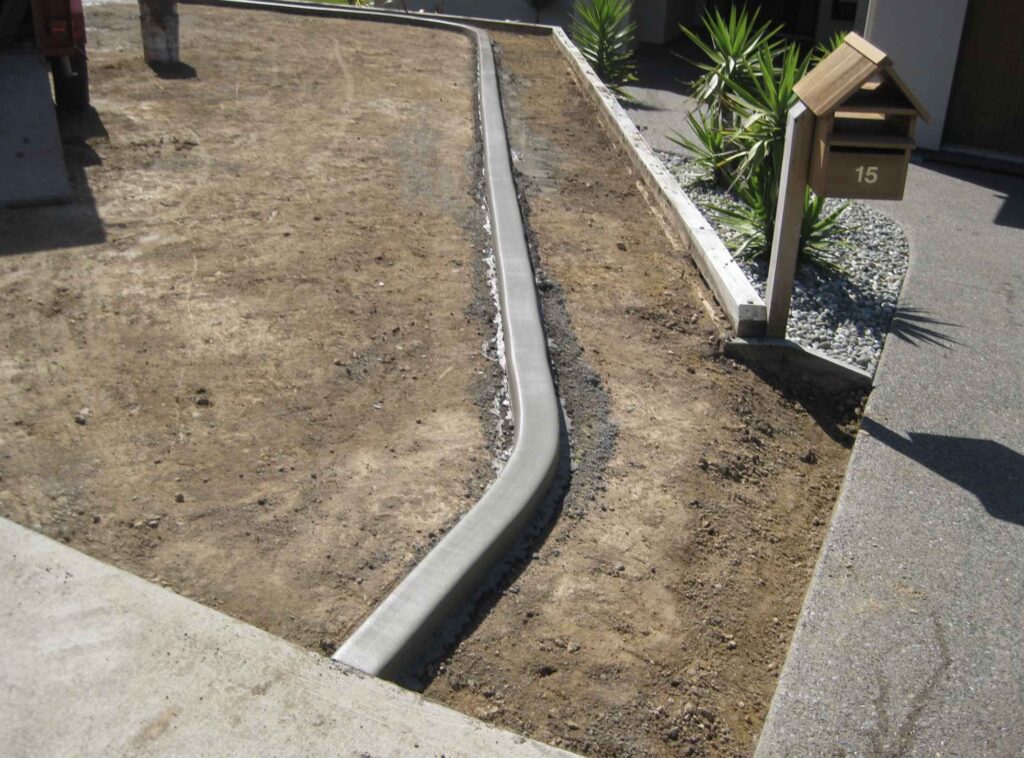
Steps for Creating Concrete Garden Edging
Creating your own concrete garden edging is a simple process requiring only a few fundamental tools and materials. First, you must measure and mark the area where the edging will be installed. Then, prepare the site by removing all vegetation and leveling and compacting the soil.
Next, mix the concrete per the manufacturer’s instructions and incorporate any desired decorative elements. Pour the concrete into the molds or forms, then use a trowel to smooth the surface. Apply a release agent to the molds in order to prevent sticking.
After the concrete has hardened, remove the molds and install the edging by excavating a trench and positioning the edging in the desired location. Backfill the trench with dirt and compact it to secure the edging. With proper installation, your concrete garden edging will last for many years and add a lovely finishing touch to your garden design.
A few simple steps are required to create concrete garden edging. This is how you can do it yourself:
A. Gather The Required Materials
- Concrete mix: Choose an appropriate concrete mix for the project, such as one with a high compressive strength for increased durability.
- Purchase or construct a form that will be used to shape the concrete into the desired edging form.
- Rebar or stakes: Use rebar or stakes to secure the form during concrete pouring.
- To mix and shape the concrete, you will need tools such as a shovel, trowel, and level.
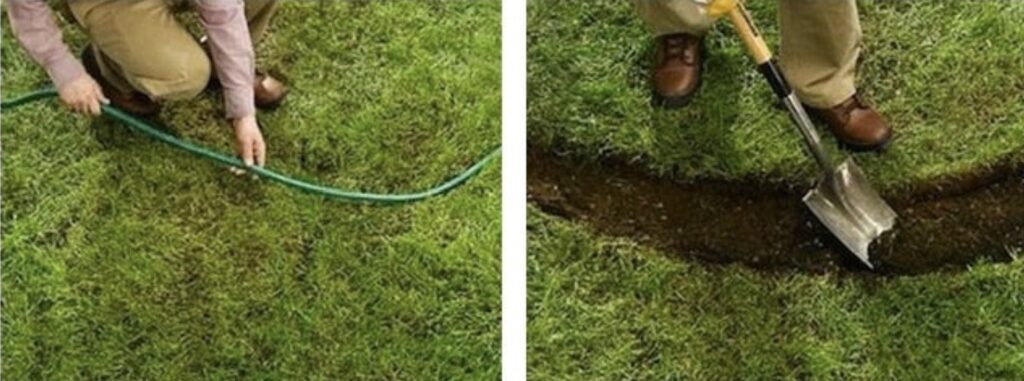
B. Prepare the Site To Lay Concrete Garden Edging
- Identify the area’s perimeter where the edging will be installed.
- Remove all weeds and grass from the area.
- Excavate a trench to the specified depth and width of the edging form.
C. Mix and Pour the Concrete
- Follow the mixing instructions on the bag of concrete mix when adding water.
- Pour the concrete into the form for the edging.
- Use a trowel to smooth out the concrete’s surface.
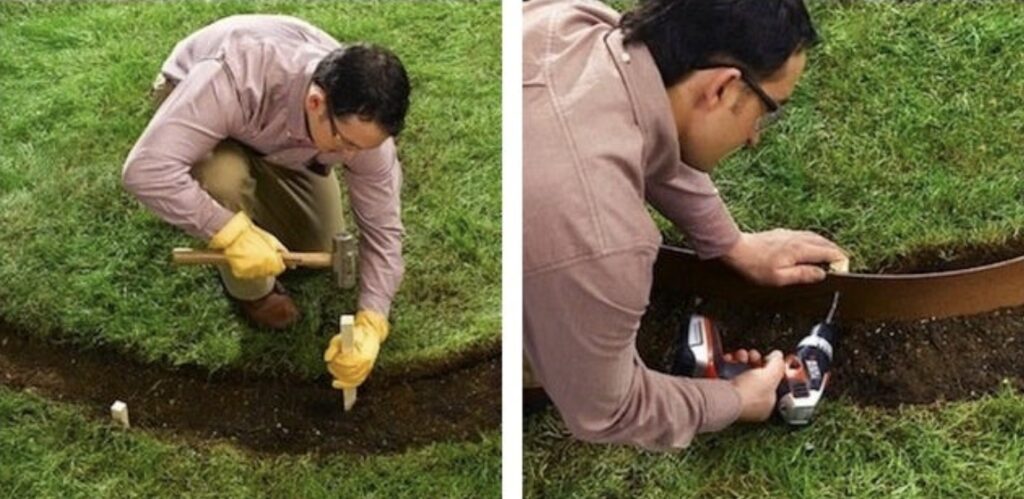
D. Remove the Form
- Wait until the concrete dries and hardens.
- Remove the form from the concrete with care.
- Remove any rough spots from the surface of the border.
E. Finish the Garden Edging
- Apply a concrete sealer to prevent weathering and staining of the concrete’s surface.
- Before pouring, add concrete color to the mixture to give the edging a decorative touch.
- Remove any debris or dirt that accumulates on the surface to keep the edge clean.
- Periodically inspect the edging for cracks or damage, and repair if necessary.
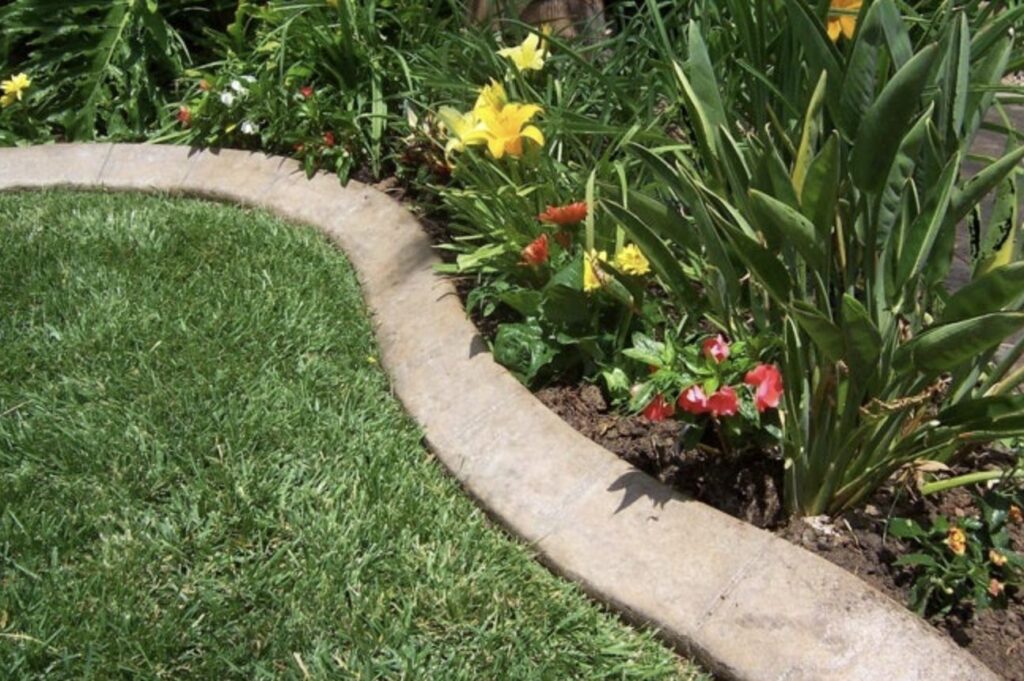
How To Create Perfect Concrete Garden Edging
By adhering to a few guidelines, you can achieve professional-looking results when creating concrete garden edging. Choose the appropriate materials for your project first. This includes the proper concrete mixture and edging forms.
Secondly, proper site preparation is essential. Ensure that the area is compacted, level, and free of debris. Your edging will last longer and look better if it is supported by a sturdy base. A further tip is to mix the concrete in small batches to ensure uniformity and prevent excessive drying.
Additionally, a release agent should be applied to the molds to prevent the concrete from adhering. Before removing the edging from the molds, be sure to follow the manufacturer’s instructions carefully and allow it to cure properly.
By adhering to these guidelines, you can create concrete garden edging that will enhance your garden for many years.
To create the ideal concrete garden edging, consider the following guidelines:
A. Choose the appropriate form:
The form you select will determine the shape and size of the edging, so make sure it complements the layout of your garden.
B. Utilize Rebar Or Stakes
Utilize rebar or stakes to hold the form in place while pouring the concrete, ensuring an even, level edge.
C.Correct Concrete Mixing
Follow the instructions on the concrete mix to ensure the correct consistency for the job.
D. Smoothen our Rough Spots
Use a trowel or sandpaper to remove any rough spots from the surface of the edging.
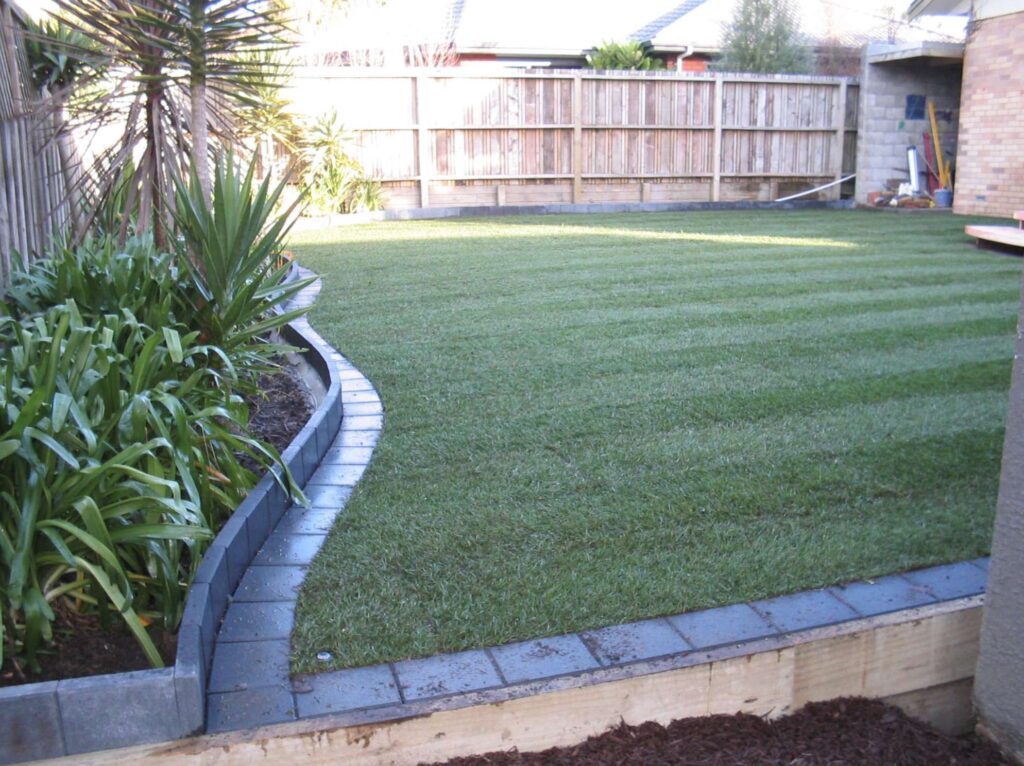
Ideas for Incorporating the Concrete Garden Edging into Garden Design
Once you have created your concrete garden edging, you can incorporate it into your garden design in a variety of ways. Creating a border around garden beds or pathways is one option. This will define the area and polish the appearance of your garden.
Before pouring the concrete, you can also incorporate decorative elements such as stones or glass beads to add interest and texture to the edging. Experiment with various edge shapes and sizes to create distinctive patterns and designs.
If you want to add a splash of color, you can paint the concrete edging with outdoor paint that complements your garden’s aesthetic. You can also combine different materials, such as bricks or stones, with the concrete edge to create a distinctive appearance. There are infinite possibilities, so be imaginative and have fun!
Once you have created your concrete garden edging, you can incorporate it into your garden design in a variety of ways. Here are some thoughts:
A. Create a border
Create a border around garden beds or pathways with the concrete edging. This will define the area and polish the appearance of your garden.
B. Add decorative elements
Before pouring the concrete, incorporate decorative elements such as stones or glass beads to add interest and texture to the edging.
C. Use different shapes and sizes:
Experiment with various edge shapes and sizes to create distinctive patterns and designs.
D. Paint the edging
If you want to add a splash of color, you can paint the concrete edging with outdoor paint that complements your garden’s aesthetic.
E. Combine with other materials
Create a unique appearance by mixing and matching different materials, such as bricks or stones, with the concrete edging.
Types Of Concrete Garden Edging
Precast Concrete Garden Edging
When it comes to choosing edging for their gardens and landscaping projects, homeowners have numerous options. Precast concrete edging has gained popularity in recent years as a landscaping option. Precast concrete edging is a type of edging made by pouring concrete into a mold and allowing it to cure before transporting it to the installation site. In this paper, we will discuss why homeowners may choose precast concrete edging for their landscaping projects.
Durability is one of the primary reasons why homeowners may choose precast concrete edging. Concrete is an extremely durable and resilient material that can withstand the elements and heavy foot traffic. This makes it an excellent option for edging around exposed garden beds, pathways, and other landscape features. Additionally, precast concrete edging is less likely to crack or break over time, requiring less maintenance and lasting longer than other edging materials.
Versatility is another reason why homeowners may opt for precast concrete edging. To match the design of your landscaping project, precast concrete edging can be made in a variety of shapes, sizes, and colors. This allows you to select edging that complements your garden design and enhances the overall aesthetic of your outdoor area. You can also experiment with various patterns and designs to create a look that is uniquely suited to your preferences.
Homeowners may also opt for precast concrete edging due to its simplicity of installation. Precast concrete edging is prefabricated and installation-ready, so it can be installed quickly and without the need for specialized tools or equipment. This is especially advantageous for homeowners who lack landscaping experience or who do not wish to spend a great deal of time installing edging themselves.
Lastly, precast concrete edging is a budget-friendly option for homeowners who wish to improve the appearance of their outdoor areas without breaking the bank. In general, precast concrete edging is less expensive than other edging materials, such as stone or brick, and requires less upkeep over time. This allows you to achieve a professional-looking finish at a fraction of the cost of other edging materials.
In conclusion, precast concrete edging is an excellent option for homeowners who want to improve the durability and longevity of their landscaping projects while enhancing the appearance of their outdoor spaces. Its adaptability, simplicity of installation, and affordability make it a popular choice among homeowners across the nation. Whether you want to create a new garden bed or simply improve the appearance of your existing landscaping, precast concrete edging may be the best option for your next outdoor project.
Circular Concrete Garden Edging
Homeowners who wish to add a touch of elegance and sophistication to their outdoor spaces frequently opt for circular concrete garden edging. This type of edging is distinguished by its circular shape, which can be tailored to your landscaping project’s specific requirements. In this essay, we will discuss the advantages of circular concrete garden edging and the reasons why homeowners may choose it.
Aesthetic appeal is one of the primary reasons why homeowners may choose circular concrete garden edging. Circular edging adds a touch of visual interest and creates a sense of movement and flow in your garden. It can also be used to highlight particular landscape elements, such as garden beds, trees, and fountains. The circular shape of the edging can also be used to create unique patterns and designs, giving your outdoor space a special touch.
Durability is another advantage of circular concrete garden edging. Concrete is a robust and long-lasting material that can withstand the elements and last for decades. This implies that your circular concrete garden edging will require minimal maintenance and upkeep, allowing you to enjoy your outdoor space without having to worry about replacing or repairing your edging in the near future.
Circular concrete garden edging is also a versatile option for outdoor space customization. Circular edging can be manufactured in a range of sizes and hues to complement the design of your garden or landscaping project. This allows you to choose an edging that complements your existing features or creates a look that is uniquely tailored to your preferences.
Additionally, installing circular concrete garden edging is simple. It can be prefabricated and delivered to your residence, making installation quick and simple. This means that you can complete your landscaping project without the use of specialized tools or equipment in a timely manner.
Circular concrete garden edging is a popular option for homeowners seeking to add a touch of elegance and sophistication to their outdoor spaces. Its aesthetic appeal, durability, versatility, and ease of installation make it an excellent option for enhancing the appearance of gardens and landscaping projects. Circular concrete garden edging is an option to consider whether you wish to create a new garden bed or simply add a touch of customization to your existing outdoor area.
Poured In Place Concrete Garden Edging
Poured-in-place concrete garden edging is a popular option for homeowners who desire a uniform and natural-looking border around their garden beds and outdoor features. This type of edging is made by pouring and shaping concrete directly on the ground. This essay will discuss the advantages of poured-in-place concrete garden edging as well as the steps required to create it.
The design versatility of poured-in-place concrete garden edging is one of its chief advantages. Given that the concrete is poured directly onto the ground, it can be shaped into any desired form. This allows for the creation of curves, angles, and other complex shapes that may not be possible with precast edging. In addition, the color of the concrete can be altered to complement your existing landscaping or to create a unique appearance that complements your outdoor space.
Durability is another advantage of poured-in-place concrete garden edging. Once concrete has hardened, it becomes a durable, weather-resistant material that can withstand heavy foot traffic. This implies that your garden edging will require minimal maintenance and will last for many years, making it a practical and cost-effective solution for your landscaping needs.
The creation of poured-in-place concrete garden edging requires basic tools and a few straightforward steps. The area where the edging will be installed is outlined and excavated to a depth of approximately six inches. Then, a wooden frame is constructed to support the concrete while it dries. The concrete is then poured into the frame and leveled to create a smooth surface. After the concrete has hardened, the wooden frame can be removed and the concrete’s edges can be shaped as desired.
Poured-in-place concrete garden edging is a popular and functional option for homeowners desiring a seamless and natural-looking border around outdoor features. Its versatility in terms of design, durability, and low maintenance make it an excellent option for enhancing the appearance and feel of outdoor areas. With the proper tools and a bit of know-how, it is possible to create poured-in-place concrete garden edging quickly and easily, allowing you to enjoy your new landscaping feature in no time.
Frequently Asked Questions
Creating your own concrete garden edging is a simple process requiring only a few fundamental tools and materials. With a little bit of practice, anyone can produce results that look professional.
Concrete garden edging is a resilient and durable material that can last for many years. Proper installation and upkeep can help to further extend its lifespan.
Yes, concrete garden edging can be customized to match your garden’s aesthetic by adding stones or paint. Additionally, you can experiment with various edge shapes and sizes to create unique patterns and designs.
The cost of constructing your own concrete garden edging will depend on the materials and equipment employed. However, making your own edging is generally a more cost-effective option than purchasing expensive pre-made edging.
Yes, you can install your own concrete garden edging with a little bit of planning and some simple tools. Be sure to carefully adhere to the manufacturer’s instructions and take all necessary precautions to avoid injury.
Final Thoughts
Creating your own concrete garden edging is a straightforward and economical way to add a beautiful and functional element to your garden design. By following the steps outlined in this article, you can create a unique appearance that complements your garden and increases the value of your home. Remember to select the proper materials, properly prepare the site, and adhere to the aforementioned guidelines when constructing the ideal concrete garden edging. With a little effort and imagination, you can create a garden of which you can be proud.
If you need a concrete contractor in New Plymouth, give us a call!
About the Author:
Mike Veail is a recognized digital marketing expert with over 6 years of experience in helping tradespeople and small businesses thrive online. A former quantity surveyor, Mike combines deep industry knowledge with hands-on expertise in SEO and Google Ads. His marketing strategies are tailored to the specific needs of the trades sector, helping businesses increase visibility and generate more leads through proven, ethical methods.
Mike has successfully partnered with numerous companies, establishing a track record of delivering measurable results. His work has been featured across various platforms that showcase his expertise in lead generation and online marketing for the trades sector.
Learn more about Mike's experience and services at https://theleadguy.online or follow him on social media:

